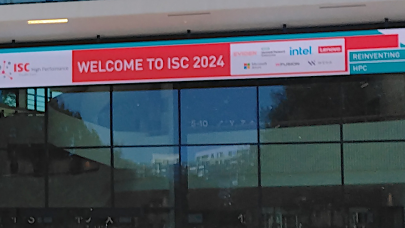CAMBRIDGE, England, Nov. 12 — Further strengthening its commitment to high performance computing (HPC) servers, ARM announced new math libraries that are precision-tuned for 64-bit ARM v8-A processors. ARM Performance Libraries are foundational math routines designed to enable the maximum performance of computational software running on ARM-based HPC (High-performance computing) servers and systems. ARM math libraries take advantage of each silicon partner’s specific microarchitecture innovations and features within their SoCs based on the ARMv8-A architecture to ensure peak system performance. The HPC community will have an opportunity to see the first public demonstrations of ARM Performance Libraries at the upcoming SC15 conference.
“ARM Performance Libraries are another key milestone in the advancement of the ARM server and HPC ecosystem,” said Hobson Bullman, general manager, developer systems group, ARM. “The HPC community are early adopters of ARM-based servers and the introduction of optimized math routines build a foundation for enabling scientific computing on 64-bit ARM based compute platforms. ARM Performance Libraries hit the mark for both software performance and a consistent library interface to enable ease of software development and portability to ARMv8-A server platforms.”
ARM Performance Libraries optimized for Partner silicon
ARM enables load-optimized silicon and server platforms that are radically expanding the realm of what is possible for the HPC community. To ensure end-customers see compelling results from differentiation enabled by the ARMv8-A architecture, ARM works with its silicon partners to enhance performance tuning for any 64-bit ARM SoC. This approach uniquely takes advantage of innovations and design choices such as memory hierarchy and pipeline configuration which can directly influence the throughput of computational operations.
Numerical Algorithms Group (NAG) at the core of ARM Performance Libraries
The NAG Library and associated validation suite is the world’s largest commercially available collection of numerical and statistical algorithms. The NAG Library represents a tried and tested baseline from which to build variants designed for the ARMv8-A architecture. Building on NAG’s industry-tested BLAS, LAPACK and FFT math routines enables ARM to bring mature, accurate and validated core libraries to market quickly. ARM Performance Libraries are multithreaded, optimized for Advanced SIMD and built using the industry’s latest compilers, enabling peak throughput on 64-bit ARM SoC designs.
“Utilizing NAG’s Linear Algebra and FFT algorithms at its core, ARM Performance Libraries are the perfect building block for higher-level scientific computing applications,” said Mike Dewar, CTO, NAG. “The hardware-specific performance tuning enabled by ARM Performance Libraries, combined with NAG’s stringent requirements for robustness and mathematical correctness, will yield the fastest and most accurate computational mathematics routines for the ARM ecosystem.”
“Cavium is pleased to partner with ARM and NAG to deliver the optimized libraries that are required for the most demanding HPC and Big Data Analytics software applications,” said Larry Wikelius, director, ecosystems and partner enablement, Cavium. “ThunderX, Cavium’s 48-core ARMv8-A based Workload Optimized Processor with dual-socket support is the ideal platform for delivering best-in-class performance for high performance computing applications utilizing the ARM Performance Library. Cavium and ARM continue to aggressively drive the ARMv8-A server ecosystem with industry-leading system and software partners that are delivering key solutions to the HPC, enterprise and hyper-scale server market.”
Enabling Open Source for ARM HPC
To accelerate porting of software to platforms based on the ARMv8-A architecture, including 64-bit ARM Cortex processor-based servers, ARM Performance Libraries offer tested binary distributions of popular open source applications for HPC including ATLAS, OpenMPI, NumPy and TAU. All changes required to port these open source applications to ARM will be fed back to the open source repositories to enable HPC community development and collaboration.
Commercially licensed
ARM Performance Libraries are available for commercial licensing and supported by ARM, providing a non-restrictive, fully supported, royalty free and maintained development platform. The pre-built, open source packages will be delivered under their respective license.
About ARM
Celebrating the 25th anniversary of its founding at the 2015 ARM TechCon, ARM is at the heart of the world’s most advanced digital products. Our technology enables the creation of new markets and transformation of industries and society. We design scalable, energy efficient-processors and related technologies to deliver the intelligence in applications ranging from sensors to servers, including smartphones, tablets, enterprise infrastructure and the Internet of Things.
—
Source: ARM

























































